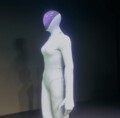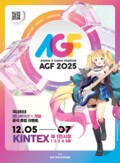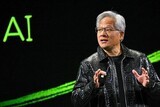AI generated images of hanbok blended with global luxury brands are attracting huge attention on social media. The designs are colorful, striking and immediately recognizable. They are also prompting debate among experts and viewers who say some creations no longer resemble traditional Korean clothing.
Viral Popularity of Luxury AI Hanbok
Digital hanbok inspired by Prada, Gucci and Louis Vuitton are dominating YouTube and TikTok feeds. A video titled “Globalizing K Hanbok through Luxury Brand Collaborations” uploaded in September by the YouTube creator Dream4U-officialkorea reached more than ten million views in just two months.
Many viewers say the AI images feel fresh and imaginative. The glossy textures and bold patterns often look like something out of a high fashion runway.
Praise and Criticism as Tradition Meets Reinvention
Online reactions tell two different stories. Some viewers admire the innovative visuals and say the unexpected combinations make hanbok feel more modern and stylish. Others argue that the AI designs lack key elements such as the traditional collar, ribbon ties and sleeve shapes. Several commenters say the pieces resemble Chinese clothing more than Korean styles.
Wedding themed AI hanbok featuring Chanel tweed or Gucci patterns also divide opinion. The designs look elegant to some, while others say the level of modification creates too much distance from historical forms.
Data Bias Reveals a Larger Problem
The controversy does not end with creative expression. AI training data sometimes fails to capture the correct structure of hanbok. When users searched for “hanbok” on Adobe’s AI image platform, the system occasionally displayed Japanese style garments.
The issue was also featured at the 2025 National Brand Up Expo, where organizers warned that flawed AI datasets can spread inaccurate information about Korean culture. They pointed to the hanbok example as evidence of the need for corrective measures.
The Ongoing Debate Over Fusion Hanbok
Another source of dispute is the fusion hanbok worn by foreign tourists at places such as Gyeongbokgung Palace. These outfits are made with sheer fabrics, metallic prints or heavy embellishments. Critics say the designs are too far removed from traditional aesthetics.
In 2018, local officials discussed whether to restrict such outfits but the proposal did not move forward. Fusion hanbok remains popular among visitors who want eye catching photos.
Experts Call for Balanced Approaches
Designers and cultural experts say creative reinterpretation is inevitable but education about traditional hanbok is essential. Hwang I-seul, CEO of the brand Leesle, notes that AI generated designs can be an artistic experiment but the public still needs reliable references for what real hanbok looks like.
Lee Sang-eun, director of the World Traditional Costume Culture Institute, says the global fashion trend of “Korean inspired” design is not always positive if it leads to misinterpretation. Park Hoo-geun, president of the Korea Hanbok Advancement Center, suggests that instead of restricting modified clothing, institutions should focus on promoting accurate traditional forms.
Preserving Identity in the Age of AI Fashion
AI generated hanbok may broaden the visual possibilities of Korean fashion. At the same time, experts argue that digital innovation should not eclipse cultural heritage. They recommend building clear databases of historic garments, textiles and patterns so that AI systems can learn from accurate examples.
The rise of AI fashion prompts a larger question about how to preserve national identity in a global landscape. Even as technology reshapes the way hanbok is imagined and consumed, the traditional foundations of the garment remain central to Korea’s cultural story.
by Song-a Choiㅣchoesonga627@gmail.com

![[동학] 카카오톡 친구탭, 결국 12월 롤백… “격자형 피드는 선택 옵션으로”](https://cdn.kmjournal.net/news/thumbnail/custom/20251126/5517_10550_1119_1763853080_120.jpg)


![[테크 칼럼] 제미나이3, GPT-5.1을 넘다…AI는 이제 ‘일을 대신하는 시대’로 간다](https://cdn.kmjournal.net/news/thumbnail/custom/20251126/5457_10454_4847_1763621329_120.jpg)



![[낭만 테크 시대] AI 대항해 시대](https://cdn.kmjournal.net/news/thumbnail/custom/20251126/5603_10714_4334_1764121414_160.jpg)

